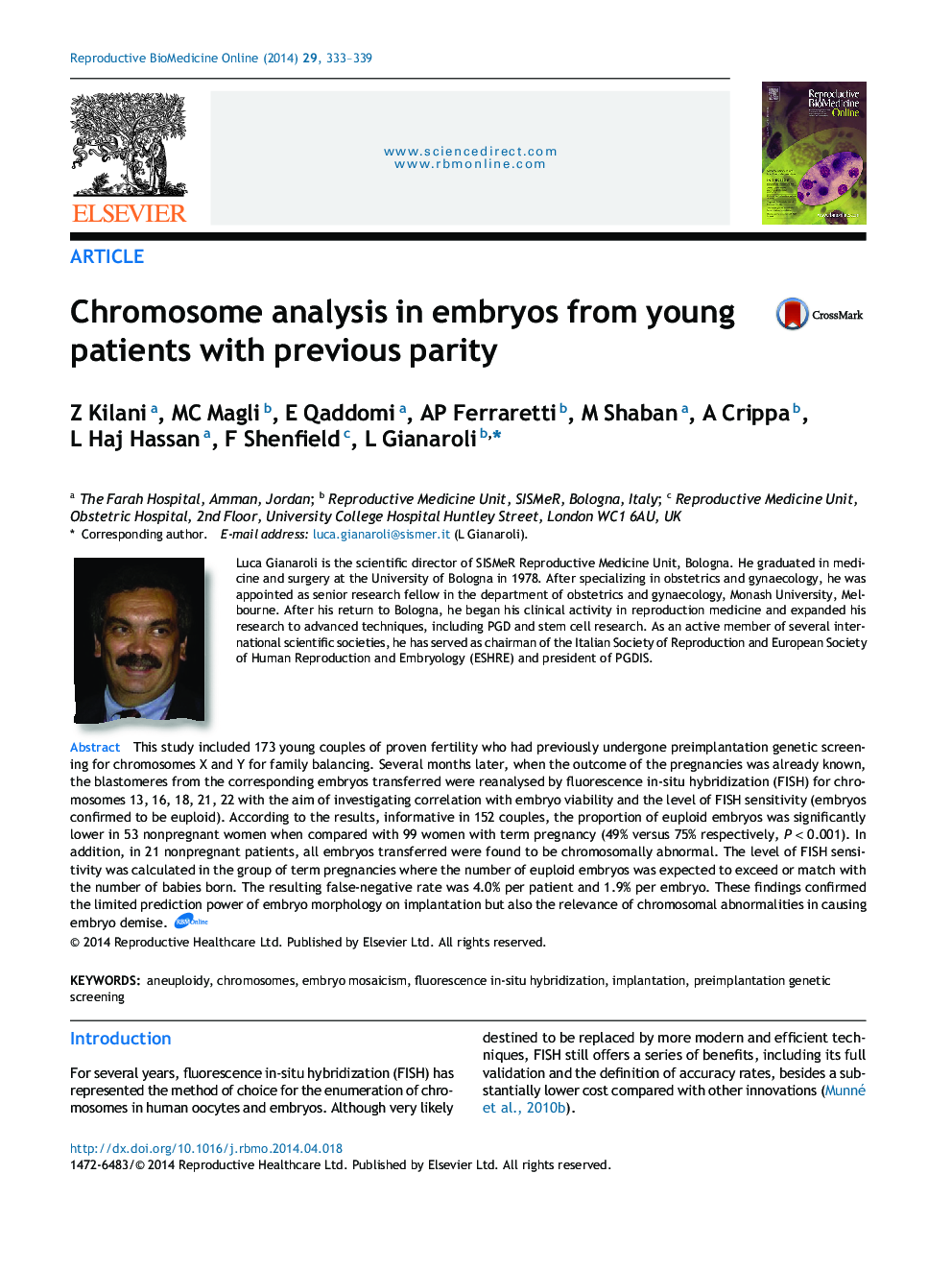| Article ID | Journal | Published Year | Pages | File Type |
|---|---|---|---|---|
| 3970123 | Reproductive BioMedicine Online | 2014 | 7 Pages |
This study included 173 young couples of proven fertility who had previously undergone preimplantation genetic screening for chromosomes X and Y for family balancing. Several months later, when the outcome of the pregnancies was already known, the blastomeres from the corresponding embryos transferred were reanalysed by fluorescence in-situ hybridization (FISH) for chromosomes 13, 16, 18, 21, 22 with the aim of investigating correlation with embryo viability and the level of FISH sensitivity (embryos confirmed to be euploid). According to the results, informative in 152 couples, the proportion of euploid embryos was significantly lower in 53 nonpregnant women when compared with 99 women with term pregnancy (49% versus 75% respectively, P < 0.001). In addition, in 21 nonpregnant patients, all embryos transferred were found to be chromosomally abnormal. The level of FISH sensitivity was calculated in the group of term pregnancies where the number of euploid embryos was expected to exceed or match with the number of babies born. The resulting false-negative rate was 4.0% per patient and 1.9% per embryo. These findings confirmed the limited prediction power of embryo morphology on implantation but also the relevance of chromosomal abnormalities in causing embryo demise.
